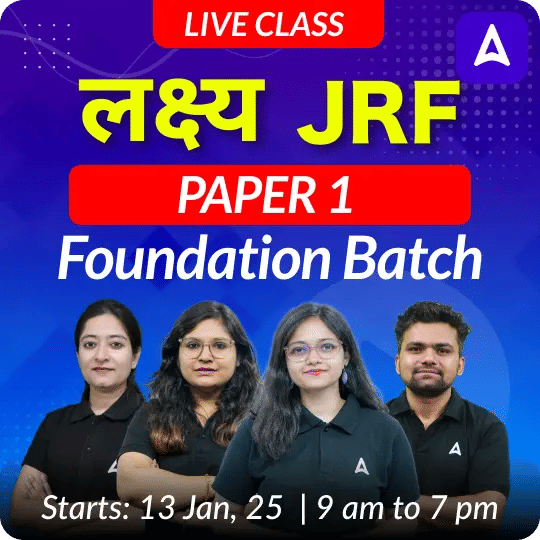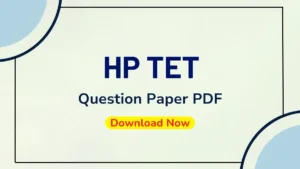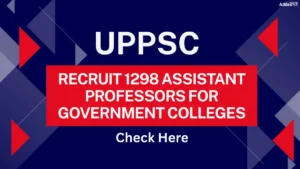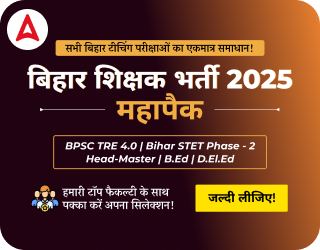Table of Contents
The SLET Commission, Assam, recently released the Assam SLET Admit Card 2025 for aspirants willing to appear in the State Level Eligibility Test. As the exam approaches, candidates are advised to take their preparations seriously and put in their best possible efforts to get to the other side. However, along with hard work and self-study, candidates always need some guidance and direction on what to put in the efforts, which is called Smart Work. Hereby, to guide all the aspirants, we have curated some SLET exam preparation tips and strategies employing what you can score a clearing total.
Assam SLET Qualifying Marks
As we discuss the Assam SLET exam preparation tips, we must be well aware of the benchmarks set by the SLET commission for candidates to qualify for the Assam SLET exam. Knowing the benchmarks will give a clear idea of the limitations below which they can’t afford to clear the SLET. As per the SLET commission, the General and EWS candidates need to at least score a minimum of 40% aggregate marks appearing in both papers and on the other hand, SC/ST/OBC, PwD and third gender need to score a minimum 33% aggregate score appearing in both papers.
| Assam SLET Qualifying Marks | |
| Category | Minimum Aggregate Marks (Both Papers) |
| General & EWS | 40% |
| SC/ST/OBC, PwD & Third Gender | 33% |
SLET Exam Preparation Tips
Preparing for the Assam SLET exam requires a well-planned approach that balances conceptual clarity, revision, and practice. Candidates should focus on understanding the syllabus and exam pattern to streamline their preparation. Moreover, preparation for the both papers can’t be the same as both exams differentiate themselves in terms of marks, syllabus and difficulty. Hence, we have curated preparation tips that are not the usual ones that won’t make any genuine difference in your preparations. Instead, here are some tips and tricks, very rarely used but highly effective and customized for both papapers separately:
Assam SLET Paper 1 Preparation Tips
Assam SLET Paper 1 tests teaching aptitude, reasoning, comprehension, ICT, and general awareness. To excel, follow smart strategies like reverse solving, time-based answering, and mind-mapping for quick recall and efficient problem-solving.
- Reverse Engineering for Logical & Mathematical Reasoning: Instead of solving every question from scratch, first look at the answer options and work backward. This method saves time and helps find the correct answer faster.
- Teaching & Research Aptitude: Think Like an Examiner: Instead of just memorizing concepts, try creating your own questions as if you were setting the paper. This will help you understand what the exam is actually testing.
- Mind-Map for ICT & Higher Education System: Make simple flowcharts or diagrams to remember important points about ICT and Higher Education topics. This will make revision faster and easier.
- The “90-Second Rule” for Data Interpretation: Spend only 90 seconds per question in Data Interpretation. If you cannot solve it within that time, move on and come back later. This prevents time wastage.
- “Teach to Learn” Approach for People & Environment: Explain environmental topics in your own words, either to yourself or someone else. Teaching something helps in better understanding and retention.
Assam SLET Paper 2 Preparation Tips
Paper 2 focuses on the chosen subject’s in-depth concepts and theories. Candidates should use topic clustering, revision checkpoints, and rapid recall methods to strengthen subject command, improve accuracy, and maximize retention before the exam.
- “Topic Clustering” for Interlinked Subjects: Instead of studying topics separately, link related topics together. For example, if you are studying Ancient Indian History, compare it with Medieval Indian History to understand the changes over time.
- “50-Question Checkpoints” for Revision: After completing any topic, solve 50 questions related to it. This will help you recall concepts quickly and highlight weak areas.
- “Keyword Code Method” for Theoretical Subjects: For complex definitions, create short codes or abbreviations to make them easy to remember. For example, for “Separation of Powers,” you can use “EJ-L” (Executive, Judiciary, Legislature).
- “Rapid Fire Answering” for Long Theories: Read a long theory topic and immediately summarize it in one line. This forces you to focus on key points rather than memorizing unnecessary details.
- “Red-Flag Technique” for Weak Areas: Make a separate notebook for mistakes made in mock tests. In the last five days before the exam, only revise these mistakes instead of reading everything again.
Assam SLET Study Plan
With only 2 weeks left for the Assam SLET exam, candidates must require a sturdy study plan to follow on a strict basis to ensure a focused and thorough revision for the exam. To facilitate all the aspirants, we have created an in detail study plan for the Assam SLET exam. You can follow that day-wise plan and pave your way for Assistant Professor positions in the North Eastern region of India.
| Assam SLET Study Plan | |||
| Week | Day & Date | Study Focus | Key Activities |
| Week 1 | Day 1 | Understanding Exam Pattern & Syllabus |
|
| Day 2 | Paper I: Teaching Aptitude Paper II: Core Subject Basics |
|
|
| Day 3 | Paper I: Research Aptitude Paper II: Subject Theory |
|
|
| Day 4 | Logical Reasoning + Paper II |
|
|
| Day 5 | Data Interpretation + Paper II |
|
|
| Day 6 | Communication & Comprehension |
|
|
| Day 7 | First Revision (Paper I & II) |
|
|
| Week 2 | Day 8 | Higher Education & Paper II |
|
| Day 9 | ICT & Paper II |
|
|
| Day 10 | Mock Test & Analysis |
|
|
| Day 11 | General Awareness & Current Affairs |
|
|
| Day 12 | Mock Test & PYQs Practice |
|
|
| Day 13 | Quick Revision + MCQs Practice |
|
|
| Day 14 | Full Revision Day |
|
|




 HP TET Question Paper 2025, Download Art...
HP TET Question Paper 2025, Download Art...
 When will UGC NET Result 2025 Out? Check...
When will UGC NET Result 2025 Out? Check...
 UPPSC to Recruit 1298 Assistant Professo...
UPPSC to Recruit 1298 Assistant Professo...




